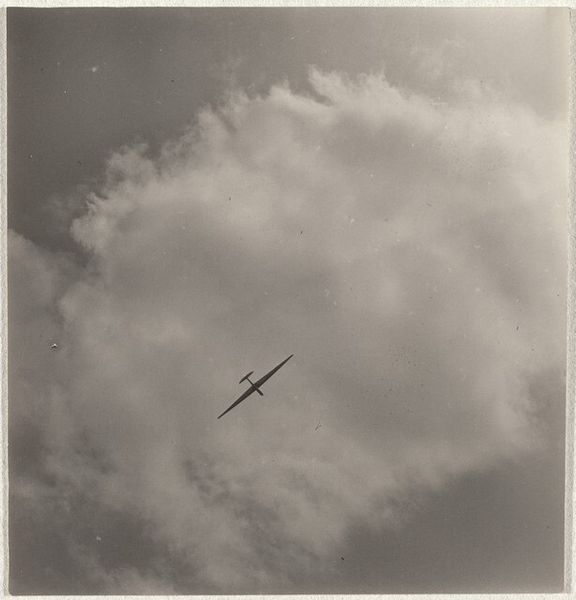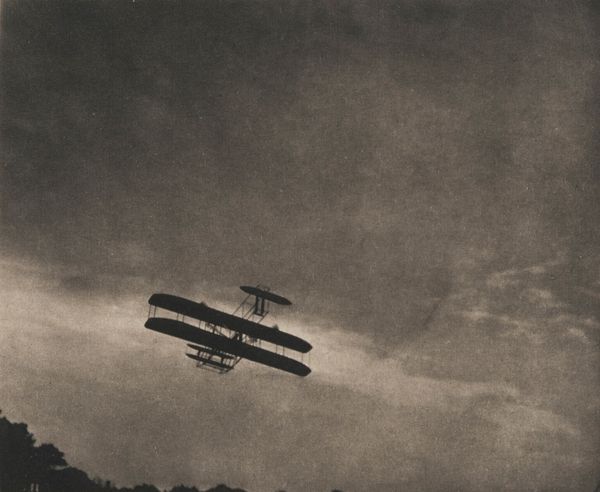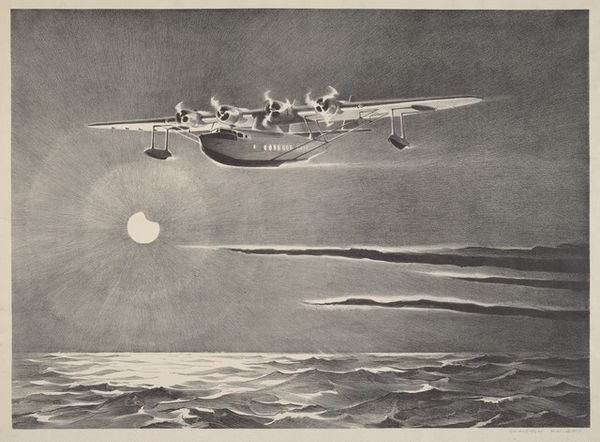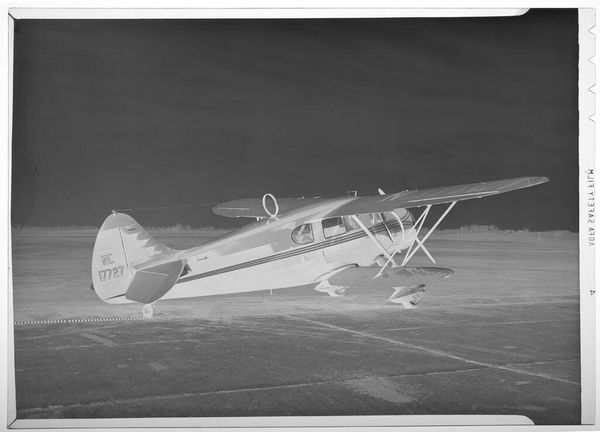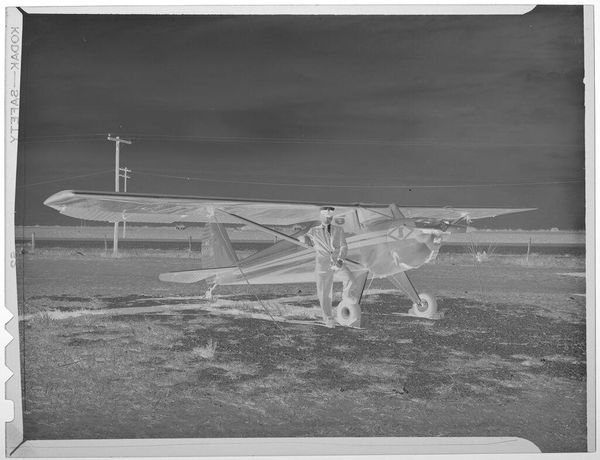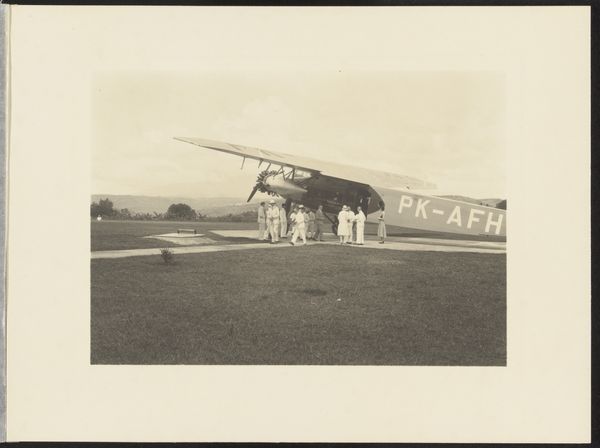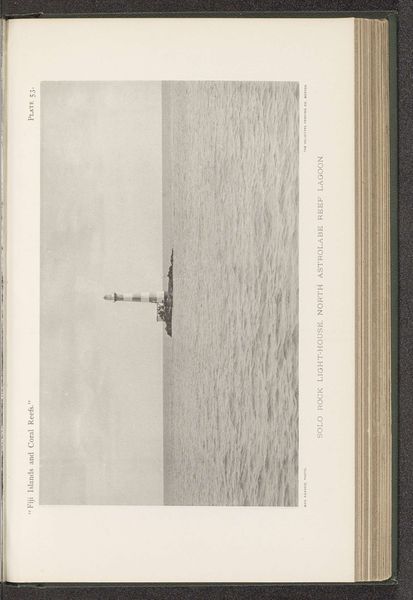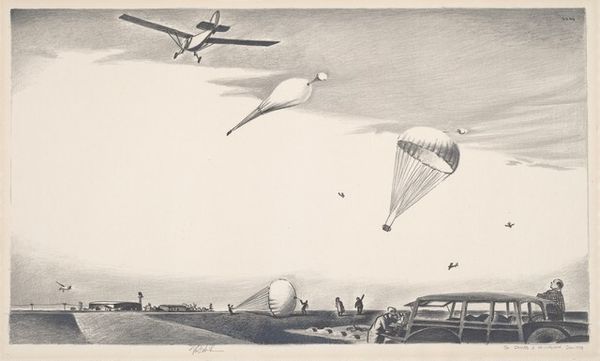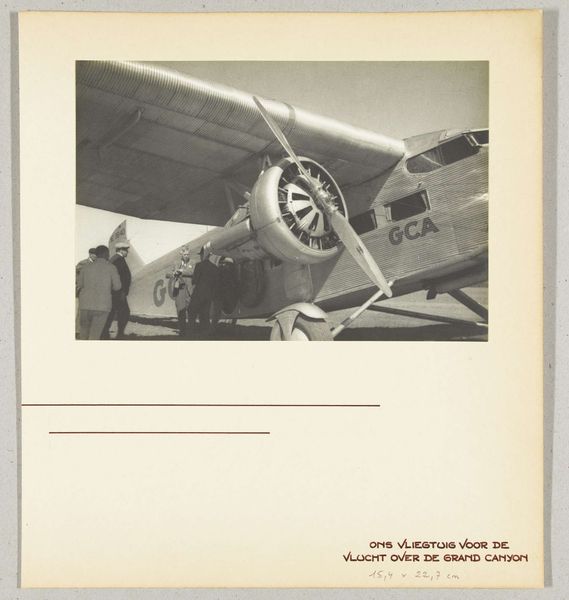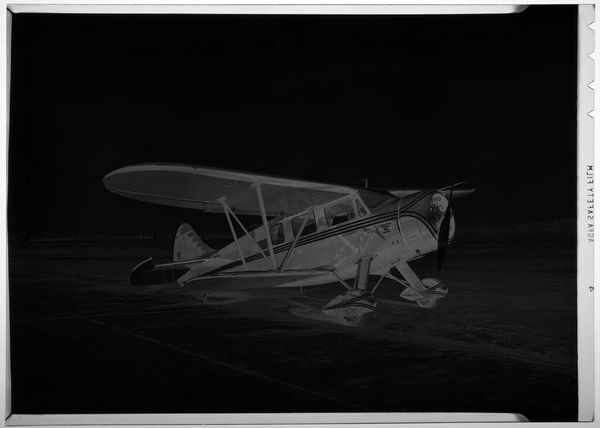
print, photography, gelatin-silver-print
# print
#
landscape
#
outdoor photography
#
photography
#
gelatin-silver-print
#
monochrome photography
#
realism
#
monochrome
Dimensions: sheet (trimmed to image): 5.8 x 5.5 cm (2 5/16 x 2 3/16 in.)
Copyright: National Gallery of Art: CC0 1.0
Editor: Here we have Robert Frank’s "Glider, Zurich," a gelatin silver print made between 1942 and 1945. I’m struck by the image's simplicity—just a glider suspended against a sky filled with clouds. It’s almost meditative. How do you interpret this work, considering its historical context? Curator: Well, seeing this image through the lens of its socio-political climate is vital. This was taken during World War II. Switzerland maintained neutrality, yet the threat of invasion was ever-present. Do you think the image speaks to this in any way? Editor: Perhaps. The glider, almost vulnerable against the sky, might symbolize Switzerland's precarious position – soaring but at the mercy of larger forces. What role do you think Frank's personal history plays in understanding this image? Curator: Frank, a Swiss Jew, would have undoubtedly been affected by the climate of fear and uncertainty that permeated Europe at that time. The glider, then, could represent both a yearning for freedom and an awareness of the limitations placed upon it. Do you find the choice of subject – a glider, a silent form of flight – significant? Editor: Yes, now that you mention it, unlike warplanes, a glider is non-threatening. Its quietness might represent a longing for peace amidst conflict, perhaps reflecting Switzerland's desire to remain uninvolved. The clouds almost feel like looming uncertainties. Curator: Precisely. Consider also the institutional framework; Frank began this work whilst still studying. Does that perspective - as a student - change your feeling about the work? Editor: Yes, it now seems like a study of form, of freedom and of danger at the same time. That’s very different. Curator: Exactly! This seemingly simple image becomes laden with complexity when viewed against the historical backdrop. It urges us to think about how political landscapes inform even the most seemingly serene scenes. Editor: I hadn't fully considered the impact of the war, but your insights really shed light on how history and personal experiences shape artistic expression. Thanks!
Comments
No comments
Be the first to comment and join the conversation on the ultimate creative platform.

